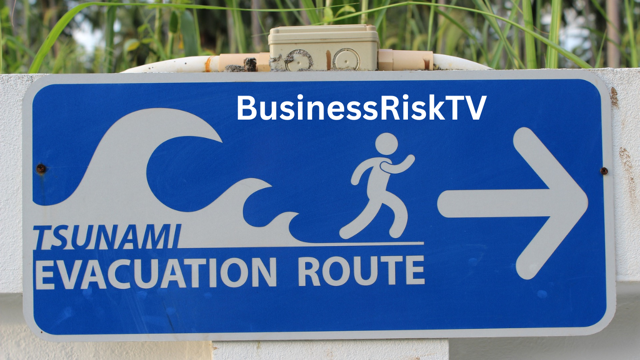The Looming Storm: Can the US Banking System Weather the End of the Lifeline?
March 2023 – a date etched in the annals of American finance. The spectre of another Great Depression loomed large as tremours ripped through the banking system. Three small-to-mid-sized banks imploded within a week, triggering a near-apocalyptic panic. Depositors fled, stocks plummeted, and whispers of systemic collapse hung heavy in the air. Then, the Federal Reserve stepped in, wielding a $160 billion bazooka dubbed the Bank Term Funding Program (BTFP) – a lifeline thrown to hundreds of vulnerable banks, staving off financial Armageddon.
But this lifeline has an expiration date – March 2024. As that date draws closer, a chilling question echoes across the financial landscape: Is the US banking system in trouble in 2024?
Understanding the Precipice:
Several factors conspired to push the banking system to the brink in 2023:
- Aggressive Interest Rate Hikes: The Fed’s efforts to combat inflation through interest rate hikes backfired, squeezing banks’ profit margins and making it harder for them to service existing loans.
- Shifting Market Landscape: The rapid increase in interest rates caught many banks with a portfolio overexposed to longer-maturity bonds, leading to significant value losses.
- Overreliance on Uninsured Deposits: Many vulnerable banks became overly reliant on uninsured deposits, making them especially susceptible to panic-driven depositor runs.
The BTFP acted as a Band-Aid, providing desperately needed liquidity and preventing an immediate meltdown. However, it did not address the underlying issues plaguing the system. Now, with the program’s sunset approaching, the question on everyone’s mind is:
Will the End of the Lifeline Spell Doom?
The potential scenarios painted by analysts range from a ripple effect to a full-blown financial crisis:
- Limited Bank Failures: The most optimistic scenario predicts a manageable number of additional bank failures, primarily among those already teetering on the edge. Deposit insurance would then kick in, mitigating the broader economic impact.
- Widespread Contagion: A more pessimistic view suggests that the collapse of even a few large banks could trigger a domino effect, causing panic and widespread depositor runs across the system. This could lead to a credit crunch, freezing lending and plunging the economy into recession.
Navigating the Maelstrom:
Regardless of the severity of the unfolding crisis, one thing is certain – the Fed will not stand idly by. Its arsenal of potential responses includes:
- Interest Rate Cuts: The Fed may be forced to reverse course on its tightening stance, slashing interest rates to spur lending and restore confidence in the banking system.
- Quantitative Easing (QE) Revival: Printing money, a tactic abandoned during the QT era, could make a reappearance as a desperate measure to inject liquidity into the system.
- Enhanced Regulatory Measures: Implementing stricter capital requirements and liquidity standards could improve the resilience of banks against future shocks.
Consequences for Everyone:
The ripple effects of a banking crisis would be far-reaching, impacting everyone from everyday citizens to Wall Street titans:
- Consumers: Loan rates could soar, credit cards could become harder to get, and access to basic financial services could be disrupted.
- Businesses: Investment and hiring could freeze, leading to job losses and dampening economic growth.
- Markets: Volatility would reign supreme, sending stock prices into a tailspin and eroding investor confidence.
The Looming Verdict:
Whether the US banking system in 2024 becomes the scene of another financial nightmare or simply experiences a bumpy landing remains to be seen. The decisions made by the Fed in the coming months will hold the key to navigating this precarious terrain. One thing is for sure – the world will be watching with bated breath as the drama unfolds.
Beyond the Brink: A World Reshaped
The shadow of March 2024 looms large, a silent question mark scribbled onto the financial calendar. Whether the BTFP’s termination triggers a tremor or an earthquake depends on a complex interplay of forces. Understanding these forces is crucial, for they hold the key to navigating the potential storm and shaping the world on the other side.
Fault Lines of Vulnerability:
Five tectonic plates lie beneath the surface, waiting to be jostled:
- Zombie Banks: Many banks, kept afloat by the BTFP, remain structurally unsound. With artificial life support withdrawn, their vulnerabilities could be exposed, triggering dominoes of failure.
- Uninsured Deposits: The reliance on uninsured deposits, particularly among smaller banks, creates a ticking time bomb. A wave of panic withdrawals could quickly drain their coffers, pushing them over the edge.
- Interconnectedness: The financial system is a spiderweb, with each thread intricately woven. The collapse of even a few key institutions could send tremors through the entire network, amplifying the crisis.
- Global Spillover: The US banking system is not an island. A domestic crisis could quickly ripple across borders, impacting economies and markets worldwide.
- Psychological Contagion: Fear, like wildfire, spreads with alarming ease. A sense of panic, once ignited, could lead to irrational behavior and exacerbate the economic downturn.
Navigating the Quake:
The Fed, the captain of this stormy ship, has a toolbox of measures at its disposal:
- Interest Rate Twists: Cutting rates could stimulate borrowing and ease pressures on banks, but it risks reigniting inflation. Striking the right balance will be a delicate dance.
- Quantitative Easing Redux: The return of QE, flooding the system with fresh money, could provide a temporary lifeline, but it could also contribute to long-term asset bubbles. The path chosen must be tread carefully.
- Regulatory Reshaping: Tighter capital requirements and stricter oversight could strengthen banks’ resilience in the long run, but implementing them amidst a crisis could stifle lending and growth. Finding the right balance is paramount.
- Transparency Torch: Clear and consistent communication from the Fed will be crucial in preventing panic and building public trust. Openness is the key to keeping calm amidst the storm.
The New Landscape:
The world on the other side of this potential crisis will be different, undoubtedly. Some potential scenarios to consider:
- A Reshaped Banking Industry: Consolidation could accelerate, with larger banks swallowing weaker ones. Smaller, community-focused banks may struggle to survive in the new paradigm.
- Technological Transformation: The dependence on traditional banking models could lessen, with fintech solutions offering greater resilience and accessibility. Blockchain and digital currencies may play a larger role.
- Increased Regulation: The pendulum may swing towards stricter oversight, with tighter controls on risk-taking and lending practices. The balance between stability and innovation will be a constant struggle.
- Global Repositioning: The US may lose some of its financial preeminence as other countries, with more robust banking systems, rise in prominence.The global financial landscape could be reshuffled.
- Societal Shifts: Public trust in financial institutions could be shaken, leading to increased skepticism and calls for reform. The relationship between citizens and banks may require reimagining.
A Call to Action:
The story of March 2024 is still unfolding, its ending an enigma waiting to be deciphered. But one thing is clear: this is not a drama for passive spectators. We all have a role to play.
- Citizens: Stay informed, engage in constructive dialogue, and hold financial institutions accountable.
- Businesses: Build financial resilience,diversify your exposure, and be prepared for potential disruptions.
- Policymakers: Act with foresight, implement well-calibrated measures, and prioritise systemic stability over short-term gains.
The potential storm can be navigated, and a brighter future built, but only through collective action, informed choices, and a shared commitment to a more robust and equitable financial system. The time to act is now, for the tremors of March 2024 could reshape the world in ways we can only begin to imagine.
Get help to protect and grow your business
Subscribe for free business risk alerts and risk reviews
Read more business risk management articles



